If you visit the Nachusa Grasslands of Illinois today, you’ll quickly find bison placidly grazing on the tallgrass – at home on the range, as if they’ve been there forever.
And bison once did roam the Illinois prairie. But these bison have only been on Nachusa for a month.
In early October, the Conservancy staff reintroduced 30 bison to 1500 acres of the grassland, the first conservation herd reintroduced to Illinois. And the animals have adapted well to their new home – roaming and grazing, as bison naturally do.
It all looks so seamless, as if all you do is pull up with a truckload of bison and – voila! – the prairie is restored.
The truth is, the moment the bison are released was the easy part. Behind that was a lot of science, restoration, consultation. A lot of homework.
What makes a bison reintroduction possible? I recently talked to Cody Considine, the Conservancy’s restoration ecologist at the Nachusa Grasslands. These are the ingredients he identified that go into a successful conservation bison program.
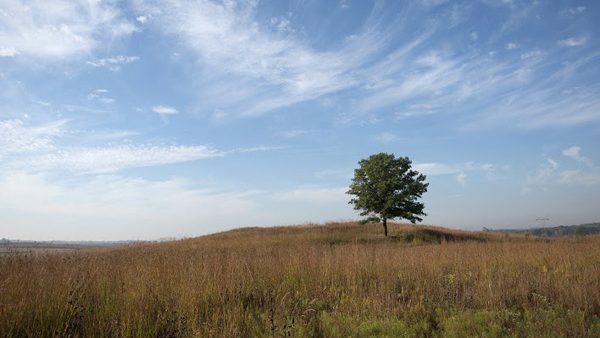
Restoration
The Conservancy purchased Nachusa in 1986, and bison were on staff members’ minds even then. But first, there was the habitat to consider.
Illinois has less than one-tenth of one percent of its original prairie. Nachusa did have tallgrass prairie remnants, but not enough to sustain a substantial bison herd.
And so the restoration began. “Conservancy scientists recognized the need to protect the remnant prairie, but also to connect and restore the landscape to what it was,” says Considine.
But this planting ultimately isn’t enough, Considine explains. Native prairie needs disturbance in the form of fire and grazing. That’s a natural part of the cycle.
“Big bluestem is a grass that slowly pushes out diversity without grazers in the mix,” he says. “That diversity we’re planting would slowly disappear.”
So the extensive restoration program creates the perfect habitat for bison – and bison will play a key role in maintaining that diversity.
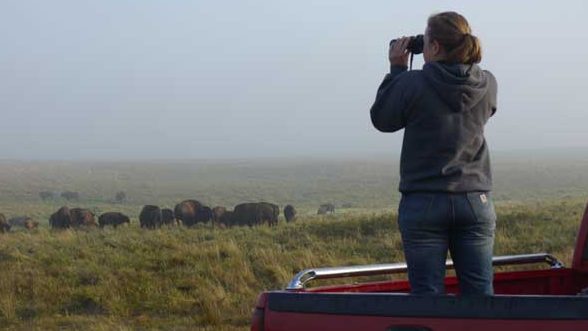
Understand the Animal
The restoration of bison is one of the great conservation successes in history. But today, many animals live on small private ranches.
How do conservationists ensure that bison behave like bison, and not just shaggy cattle?
The Nature Conservancy is a leader in the conservation of bison. Before their return to Nachusa, the Conservancy had 5500 bison spread over 12 preserves in 8 states, Canada and Mexico.
They are extensively researched, providing valuable information on their behavior, genetics and effects on grasslands.
And so Considine knew he had a great resource. He had a bit of homework to do – and even more field work.
He visited other preserves with bison, as well as one of the Ted Turner ranches.
“We spent a lot of time with managers and staff at those preserves, the people who are with bison every day,” he says. “We analyzed and critiqued, we noted what we liked and what we didn’t. We took all that knowledge and put together a plan for what we thought would work at Nachusa.”
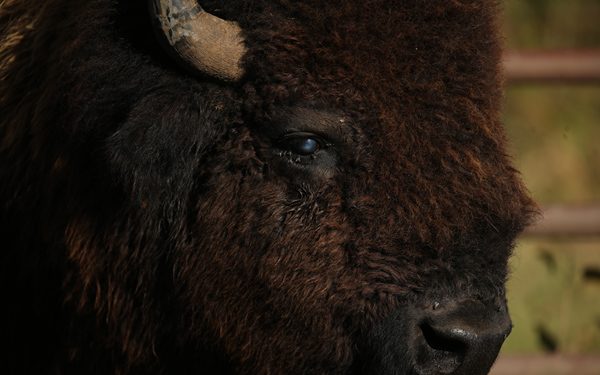
Behavior
Conservationists have found that bison herd behavior affects their use of the prairie and their breeding success (read more about this research on the Ordway Prairie).
Introducing a mix of animals that mimic a natural herd is essential for a reintroduction. The Nachusa reintroduction included animals from a variety of age and family groups, with mature cows to establish hierarchy.
“If you just introduce younger animals, the herd structure gets out of whack,” says Considine. “Older cows provide order and a sense of direction.”
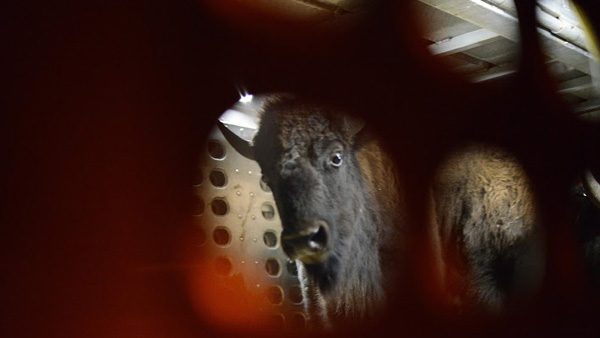
Genetics
Some of the rescuers of the last bison were ranchers, and some of them had the idea of improving their herds by crossing bison with cattle.
As such, there are very few bison without cattle genes today. For bison conservationists, preserving the species’ genetics is as important as their role in prairie ecology.
“We see our conservation herd as an opportunity to aid in the conservation of this species,” says Considine.
Wind Cave National Park is unique in that its bison herd was protected from being bred with cattle, so the bison there show the least amount of cattle gene introgression. That’s where Nachusa’s herd originated.
But the attention to genetics doesn’t stop there.
“We will continue to move bison around to ensure genetic diversity of the animal,” says Considine. “This is an opportunity to breed bison that have the best genetics so that we have healthier herds.”
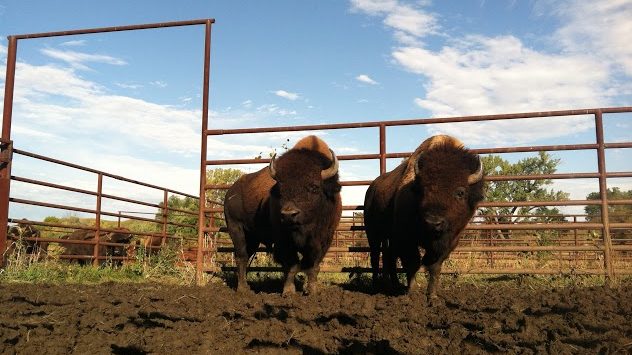
Managing Stress
Sure, dealing with 2000 pound animals can be stressful, but it’s not human stress that’s of concern here. Bison can feel stress, too. Especially when they’re confined.
For 364 days a year, the bison will roam free at Nachusa, largely free from human interference. But on that one day, they need to have a check-up to ensure their health. And that means a corral.
A corral is not a place a bison wants to be. A panicked bison can hurt itself and people.
A former seasonal restoration technician at Nachusa, Michelle Crites, was also one of Temple Grandin’s students at Colorado State University. Grandin is well known for revolutionizing handling facilities in the cattle industry.
Preserve staff were in consultation with Grandin through Crites when the final designs for the corral were being developed. The Conservancy’s corral design incorporates many of Grandin’s principles to provide a low-stress environment for handling bison.
Grandin approved the design, and may visit the preserve next year.
“The corral design basically uses bison’s natural behavior in safely moving them where we want them to go,” says Considine. “Another cool feature of the corral is the Berlinic cube and squeeze chute. Unlike other handling equipment that was made for cattle, the Berlinic was designed specifically for bison. It allows us to sort animals and move them quickly while being low stress and safe.”
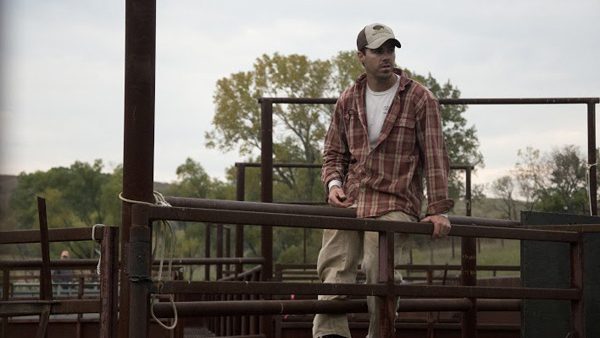
Research and Monitoring
“Most of the conservation herds of bison are in the West,” says Considine. “That makes this a great opportunity to see how bison interact with the eastern prairie.”
Bison were once abundant here, of course, but how will they do on a restored prairie?
A lot of research went into the preparation for their return, and it will continue to be a part of bison management.
“We have 28 years of monitoring data, so we will be able to see what effects bison have on the prairie,” says Considine. “We will be looking at how birds and small mammals respond. We’ll be measuring vegetation.”
He notes that one of the goals of the research will be determining how many bison the area can support. By next fall, the bison will be able to roam 1,500 acres of the preserve, with a potential for a population of 150 animals.
Twenty years from now, there could be 5,000 acres available, and the herd may grow to several hundred bison.
“Science is a vital part of this project,” Considine says. “It will be interesting to see how bison graze here, and how the prairie responds. It will provide prairie conservationists with new data, not only on bison but on how best to protect and restore grasslands.”
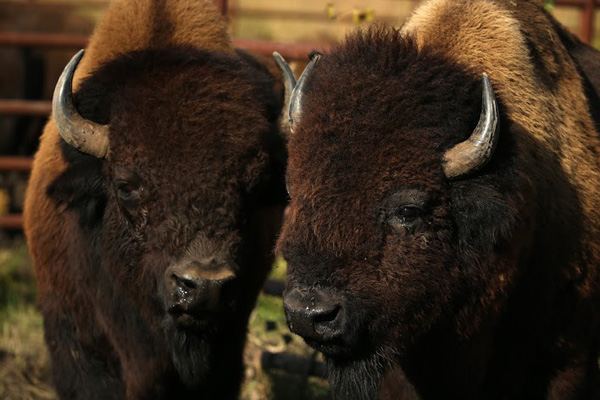



Will this help the Greater Prairie-Chicken population?
I believe that all you are doing is conserving a core population for future harvesting. Some of your people are pro- rodeo, one of the most cruel forms of animal abuse. Just let the poor Bison die out if they have no future in this cruel, human infested world. Yes……I ‘m well aware of cruelty in nature, but we take it many steps further, causing individuals unimaginable pain and suffering, worse than in nature. Nature does not excuse our cruelties. I know you will all go to hell for your crimes against others.